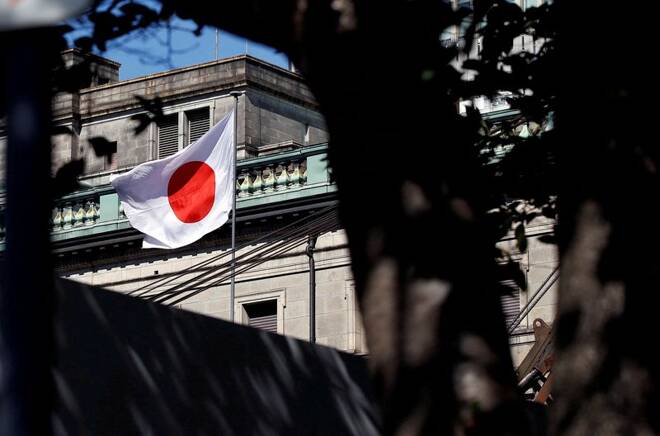Advertisement
Advertisement
Markets ride $1 trillion global liquidity wave: McGeever
By:
By Jamie McGeever ORLANDO, Fla. (Reuters) - The explanation for the whoosh higher in risk assets this year may be as simple as it is surprising: eye-popping liquidity from central banks.
By Jamie McGeever
ORLANDO, Fla. (Reuters) -The explanation for the whoosh higher in risk assets this year may be as simple as it is surprising: eye-popping liquidity from central banks.
Largely thanks to the Bank of Japan hoovering up domestic government bonds to keep its ‘yield curve control’ policy intact, and stimulus from the People’s Bank of China (PBOC), aggregate liquidity from the official sector has surged in recent months.
Apollo Global Management’s Torsten Slok reckons the BOJ bought $291 billion of bonds in January – a monthly record which contributed to G4 central banks’ first net injection of liquidity into the global financial system since last April.
Matt King, global strategist at Citi in London, estimates around $1 trillion has been pumped into the global system in the last few months, a vast sum in its own right but an especially large one given where central banks are in the policy cycle.
Led by the Federal Reserve, they are, broadly speaking, deeply mired in the battle against inflation: raising interest rates, draining liquidity via ‘quantitative tightening’, and talking tough by promising to raise rates further if need be.
Yet the aggregate flow has been indisputably positive for world markets. Risky assets like equities have had a great start to the year despite the spike in short yields and implied rates, financial conditions have eased, and volatility has stayed low.
What happens for the rest of the year may depend on the path the BOJ pursues under new Governor Kazuo Ueda, who succeeds Haruhiko Kuroda – the architect of a decade of super-loose policy – in early April.
“We have this very unique situation where central banks around the world are trying to cool inflation, but the BOJ is holding onto ‘YCC,'” says Slok, chief economist and partner at Apollo.
“Japanese investors are suddenly sitting with a lot of cash in their hands. If this continues, liquidity from Japan will continue to support global markets,” he adds.
The BOJ’s $291 billion purchases of Japanese Government Bonds (JGBs) in January was the central bank’s fourth monthly net purchase in a row. Since October, the BOJ has bought more than $475 billion of JGBs.
The BOJ flow in January outstripped the combined liquidity drain from the Fed, European Central Bank and Bank of England, resulting in a G4 net liquidity provision of $115.3 billion.
$1 TRILLION LIQUIDITY POOL
Pressure had been mounting on the BOJ for months to tweak its YCC policy of buying unlimited amounts of bonds to effectively cap the 10-year yield at 0.25%. But the BOJ’s Dec. 20 announcemente that it would raise the cap to 0.50% still stunned markets.
January’s flow data suggests the BOJ has been forced to buy even more bonds to defend the new upper limit.
Citi’s King says the BOJ has not been acting alone. Operations from the ECB and, most notably, the PBOC, have helped pour around $1 trillion of liquidity into the global financial system in recent months.
King estimates that a $1 trillion swing in central bank liquidity is enough to push global equities up or down roughly 10%, add or subtract 50 basis points to investment grade credit and 200 basis points to high-yield spreads.
That $1 trillion is broadly made up of: $200 billion from the BOJ; 300 billion euros from the ECB since August drawing down government deposits (akin to the U.S. Treasury General Account at the Fed); and more than $400 billion in December alone from the PBOC’s boosting of bank reserves via liquidity operations.
Analysts at CrossBorder Capital reckon the PBOC’s liquidity injections in December and January totaled $450 billion, a staggering sum that is around three and a half times more than its total injections in the past two years.
In the United States, the Fed has diluted its ‘quantitative tightening’ liquidity draining program by drawing down its TGA and reverse repo facilities, both actions which effectively add liquidity to the banking system.
These flows go a long way towards explaining why markets have been so buoyant this year. As Citi’s King says, when changes in even the least significant line items on central bank balance sheets are measured in the hundreds of billions of dollars, “they should command investors’ respect.”
But how long will this be sustained?
“While further gyrations in global liquidity seem likely to remain a major driver of markets, for now the sort of technical factors which added $1 trillion over the past quarter seem unlikely to repeat themselves,” King wrote on Sunday.
(The opinions expressed here are those of the author, a columnist for Reuters.)
Related columns:
– U.S. debt ceiling saga softens Fed’s QT
– Bank of Japan shock raises 2023 global liquidity risks
(By Jamie McGeever; Editing by Paul Simao)
About the Author
Reuterscontributor
Reuters, the news and media division of Thomson Reuters, is the world’s largest international multimedia news provider reaching more than one billion people every day. Reuters provides trusted business, financial, national, and international news to professionals via Thomson Reuters desktops, the world's media organizations, and directly to consumers at Reuters.com and via Reuters TV. Learn more about Thomson Reuters products:
Did you find this article useful?
Latest news and analysis
Advertisement
